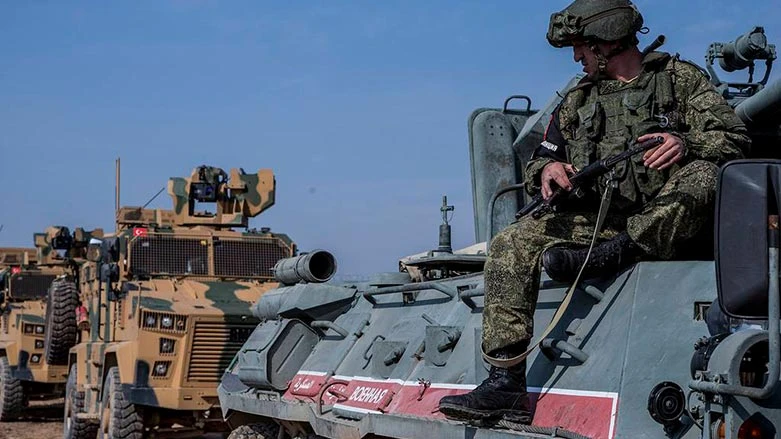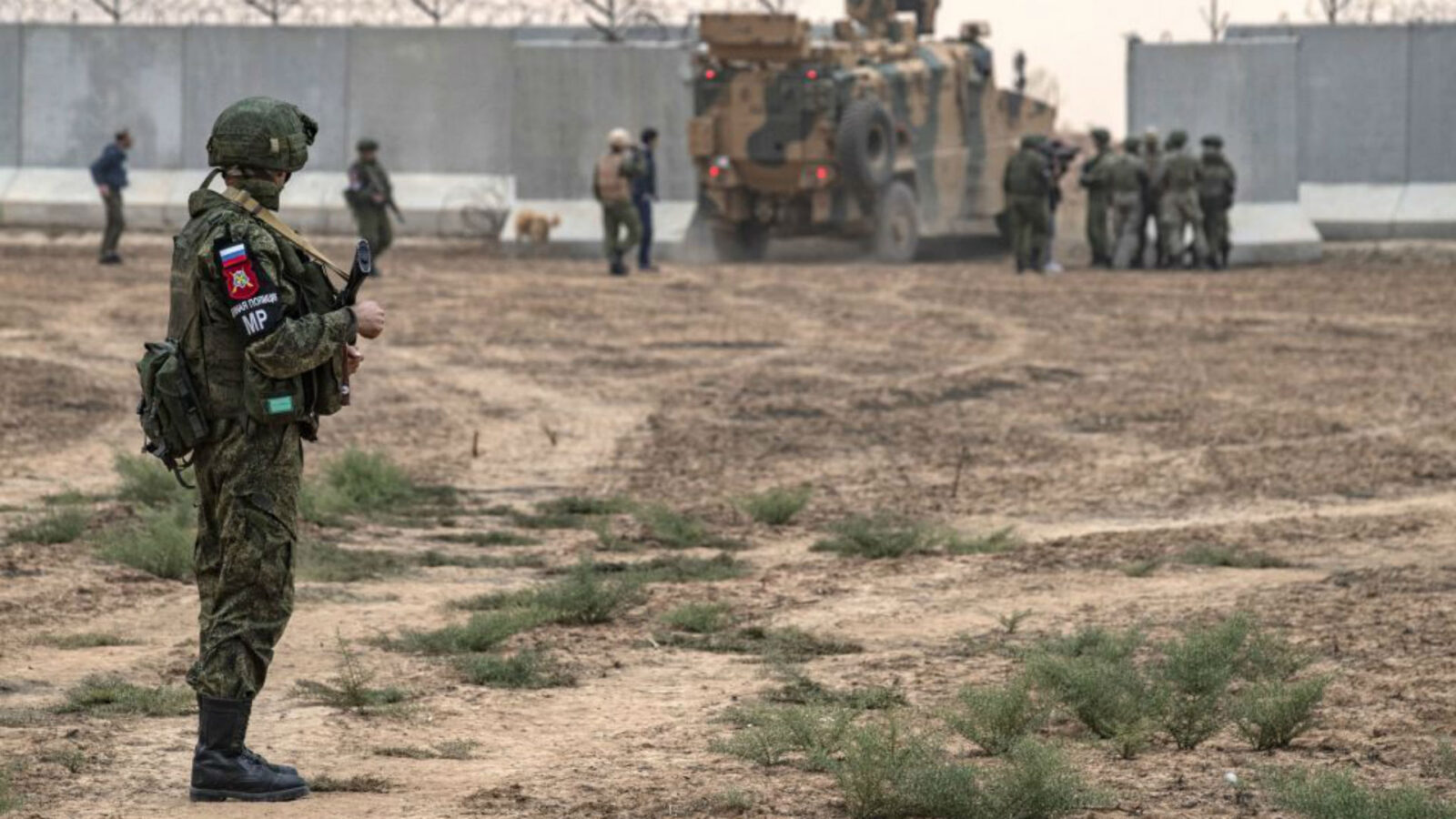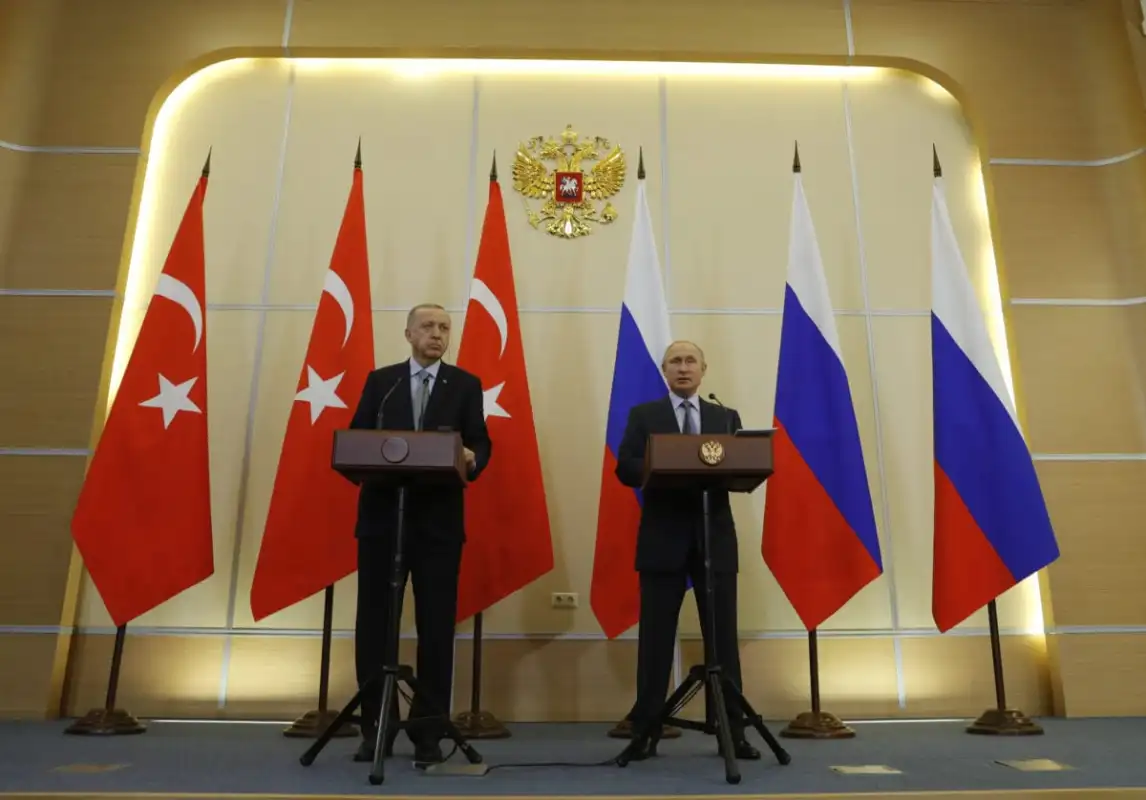Turkish-Russian joint patrol resumes in Syria after nearly a year
 A joint patrol mission by Russian military police and Turkish Armed Forces (AP Photo)
A joint patrol mission by Russian military police and Turkish Armed Forces (AP Photo)
The Russian and Turkish forces conducted their first joint patrol in nearly a year in areas controlled by the terrorist organization PKK/YPG in northeastern Syria, according to local reports.
This patrol marks the resumption of such operations after a prolonged hiatus.
The patrol, which consisted of eight military vehicles from both the Russian and Turkish forces, took place along the Al-Darbasiyah route in the countryside of Al-Hasakah. Neither side has confirmed the joint patrol yet.
According to local reports, the patrol covered several villages in the Al-Darbasiyah area, conducting reconnaissance operations in villages close to the Turkish border.
Background on patrol suspension
This joint patrol is the first of its kind since operations were halted nearly a year ago. Reports indicate that the actual suspension of patrols along the Al-Darbasiyah route occurred on Aug. 24, 2023.
In other regions, such as Ayn al-Arab, joint patrols were suspended in July 2023, and along the Al-Malikiyah route, they were halted on December 22, 2022.
The resumption of joint patrols comes amid ongoing tensions in the region, where both Russian and Turkish forces have maintained a balance of power. The patrols are part of broader agreements between Moscow and Ankara aimed at managing security concerns along the Syrian-Turkish border where the terrorist PKK/YPG is present.

Patrol mechanism, Sochi Agreement
Russia and Türkiye have initiated joint ground patrols in northern Syria to verify the withdrawal of YPG/PKK terrorists from the region, a critical aspect of the agreement reached in Sochi on October 22, 2019.
Analysts suggest these patrols serve as a mechanism to ensure the fulfillment of the pact, which mandates that YPG/PKK terrorists retreat 30 kilometers (18.6 miles) south of the Turkish border, which did not happen.
Sochi Agreement
On October 22, 2019, Russian President Vladimir Putin and President Recep Tayyip Erdoğan reached a pivotal agreement during a diplomatic summit in Sochi, Russia.
The negotiation, which took six and a half hours to conclude, resulted in the formation of the Second Northern Syria Buffer Zone.
This buffer zone, created as part of a memorandum of understanding, aims to de-escalate the ongoing conflict in northern Syria.
The agreement between the two leaders marked a significant diplomatic effort to stabilize the region, with both Russia and Türkiye playing key roles in enforcing the terms of the deal.

Memorandum of understanding
- The two sides reiterate their commitment to the preservation of the political unity and territorial integrity of Syria and the protection of the national security of Türkiye.
- They emphasize their determination to combat terrorism in all forms and manifestations and to disrupt separatist agendas in the Syrian territory.
- In this framework, the established status quo in the current Operation Peace Spring area covering Tel Abyad and (Ras al-Ain) with a depth of 32 kilometers will be preserved.
- Both sides reaffirm the importance of the Adana Agreement. The Russian Federation will facilitate the implementation of the Adana Agreement in the current circumstances.
- Starting noon at of October 23, 2019, Russian military police and Syrian border guards will enter the Syrian side of the Turkish-Syrian border, outside the area of Operation Peace Spring, to facilitate the removal of YPG elements and their weapons to the depth of 30 kilometers from the Turkish-Syrian border, which should be finalized in 150 hours. At that moment, joint Russian-Turkish patrols will start in the west and the east of the area of Operation Peace Spring with a depth of 10 kilometers, except Qamishli city.
- All YPG elements and their weapons will be removed from Manbij and Tal Rifat.
- Both sides will take necessary measures to prevent infiltrations of terrorist elements.
- Joint efforts will be launched to facilitate the return of refugees safely and voluntarily.
- A joint monitoring and verification mechanism will be established to oversee and coordinate the implementation of this memorandum.
- The two sides will continue to work to find a lasting political solution to the Syrian conflict within the Astana Mechanism and will support the activity of the Constitutional Committee.



